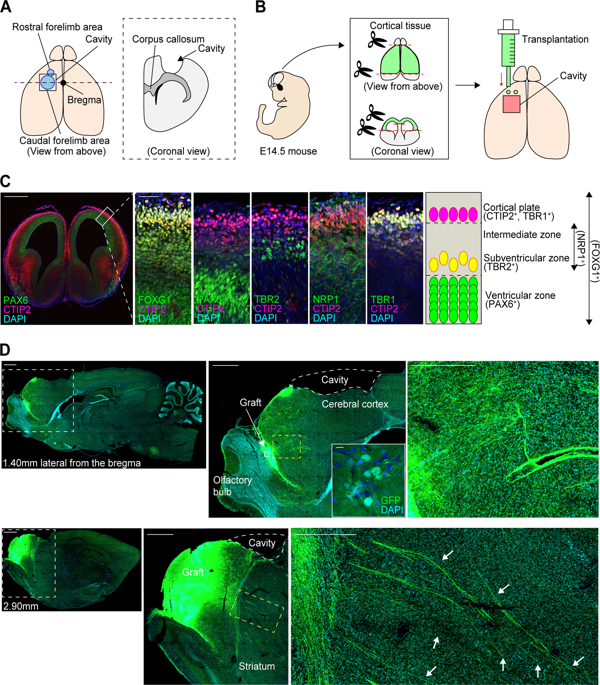npj Regenerative Medicine ( IF 6.4 ) Pub Date : 2019-06-05 , DOI: 10.1038/s41536-019-0075-6 Takafumi Shimogawa , Hideya Sakaguchi , Tetsuhiro Kikuchi , Ryosuke Tsuchimochi , Noritaka Sano , Sadaharu Torikoshi , Akira Ito , Tomoki Aoyama , Koji Iihara , Jun Takahashi

|
Cell-based therapies are attracting attention as alternative therapeutic options for brain damage. In this study, we investigated the therapeutic effect of a combined therapy of cell transplantation and locomotor training by evaluating the neuronal connectivity. We transplanted neural cells derived from the frontal cortex of E14.5 GFP-expressing mice into the frontal lobe of 3-week-old rats with brain injury, followed by treadmill training (TMT) for 14 days. In the TMT(−) group, graft-derived neurites were observed only in the striatum and internal capsule. In contrast, in the TMT(+) group, they were observed in the striatum, internal capsule, and the cerebral peduncle and spinal cord. The length of the longest neurite was significantly longer in the TMT(+) group than in the TMT(−) group. In the TMT(+) group, Synaptophysin+ vesicles on the neuronal fibers around the ipsilateral red nucleus were found, suggesting that neuronal fibers from the grafted cells formed synapses with the host neurons. A functional analysis of motor recovery using the foot fault test showed that, 1 week after the transplantation, the recovery was significantly better in the cell transplantation and TMT group than the cell transplantation only group. The percentage of cells expressing C-FOS was increased in the grafts in the TMT(+) group. In conclusion, TMT promoted neurite extensions from the grafted neural cells, and the combined therapy of cell transplantation and locomotor training might have the potential to promote the functional recovery of rats with brain injury compared to cell transplantation alone.
中文翻译:

运动与运动联合训练对脑损伤大鼠的治疗作用
基于细胞的疗法作为脑损伤的替代疗法正引起人们的关注。在这项研究中,我们通过评估神经元的连通性,研究了细胞移植和运动训练相结合的治疗方法的疗效。我们将源自表达E14.5 GFP的小鼠额叶皮层的神经细胞移植到3周龄脑损伤大鼠的额叶中,然后进行跑步机训练(TMT)14天。在TMT(-)组中,仅在纹状体和内囊中观察到了源自移植物的神经突。相反,在TMT(+)组中,在纹状体,内囊以及脑梗和脊髓中观察到它们。在TMT(+)组中最长突突的长度明显比在TMT(-)组中长。在TMT(+)组中,突触素在同侧红色核周围的神经元纤维上发现+囊泡,表明来自移植细胞的神经元纤维与宿主神经元形成突触。使用足部缺损测试进行的运动恢复功能分析表明,移植后1周,细胞移植和TMT组的恢复明显优于单纯细胞移植组。在TMT(+)组的移植物中,表达C-FOS的细胞百分比增加。总之,TMT促进了移植神经细胞的神经突延伸,与单独进行细胞移植相比,细胞移植和运动训练的联合治疗可能具有促进脑损伤大鼠功能恢复的潜力。











































 京公网安备 11010802027423号
京公网安备 11010802027423号